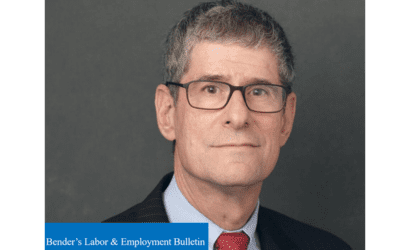The outcome of many disability insurance cases depends on the court’s assessment of the claimant’s credibility since symptom complaints are difficult to objectively verify.
A recent ruling from a federal court in New York offers an excellent example. The case of Khan v. Provident Life and Accident Insurance Co., 2019 WL 1970516 (W.D. N.Y., May 3, 2019), involved Dr. Farooq Khan, a neurologist, who complained of joint pain and fatigue that worsened over several years, although an exact diagnosis was elusive.
Khan ultimately ceased working on June 9, 2013, and applied for disability benefits using a diagnosis of polychondritis, a condition the court described as “a rare autoimmune disorder characterized by progressive inflammation of cartilage, particularly of the ears, nose and trachea, with cartilage destruction,” that “can also be associated with polyarthritis and ocular symptoms.”
The insurance company denied Khan’s claim, asserting his condition was mild or well-controlled and that he should have been able to work. A concurrent application for Social Security disability benefits was successful, though.
The court focused its determination on an assessment of Khan’s credibility, finding Social Security’s two-step methodology for evaluating credibility useful.
The adjudicator first asks whether the claimant suffers from a medically determinable impairment that “could reasonably be expected to produce” the alleged symptoms and then examines the evidence relating to the “intensity and persistence of those symptoms.”
As to that step, the court found it significant that disability insurer Unum’s doctors did not challenge the polychondritis diagnosis. The court also pointed to an abundance of evidence confirming and corroborating the severity of the claimed symptoms.
Unum questioned Khan’s claim because he submitted his application for benefits shortly after he was terminated from his position. However, the court inferred otherwise since the evidence relating to the job termination showed the reason was due to Khan’s failure to meet billing expectations or see enough patients.
The court found that explanation correlated with Khan’s statements made to his doctors that his pain and fatigue were increasing in severity to the point that he was unable to keep up the pace required of him at work.
The court also rejected the insurer’s argument that Khan’s efforts to continue working undermined his allegations:
“The fact that plaintiff persevered in continuing to work despite his chronic fatigue and pain should not be used against him. See Reddick v. Chater, 157 F.3d 715, 722 (9th Cir. 1998) (‘[D]isability claimants should not be penalized for attempting to lead normal lives in the face of their limitations’). Indeed, ‘numerous courts have recognized that a disability claimant can still be found to be disabled even if he or she worked for some period after the onset of disability.’ Perryman v. Provident Life & Accident Insurance Co., 690 F. Supp.2d 917, 950 (D. Ariz. 2010) (fact that claimant continued to work for three years after diagnosis of chronic fatigue syndrome was, by itself, insufficient to establish that she was not disabled under ERISA [Employee Retirement Income Security Act] disability plan’s ‘any occupation’ provision, where there was evidence that she experienced serious problems working during that period) (citing Hawkins v. First Union Corp. Long-Term Disability Plan, 326 F.3d 914, 918 (7th Cir. 2003) (in an ERISA fibromyalgia case, noting that there is no ‘logical incompatibility between working full time and being disabled from working full time’ because ‘[a] desperate person might force himself to work despite an illness that everyone agreed was totally disabling’ but ‘even a desperate person might not be able to maintain the necessary level of effort indefinitely.’); Rochow v. Life Insurance Company of North America, 482 F.3d 860, 865 (6th Cir. 2007) (disability claimant’s presence on the payroll subsequent to the alleged disability onset date is not determinative as to whether he was disabled during that time); other citation omitted).”
In a similar vein, the court rejected Unum’s contention that Khan’s ability to read, use a computer, perform household chores and grocery shop proved he could work.
“There is, quite obviously,” the court explained, “nothing inherent in these activities that proves plaintiff has the ability to perform the exertional and cognitive demands of a hospital neurologist, much less to do so eight hours a day, five days a week, or, during the periods when he was ‘on call,’ to be able to do them 24 hours a day, seven days a week, if necessary.”
The court viewed the insurer’s doctors’ opinions as “collectively constitut[ing] an unfavorable referendum on plaintiff’s credibility, formed without the benefit of examining plaintiff in person.” The court refused to accept those findings, though, citing a number of court rulings pointing out the weakness inherent in the opinions of nonexamining physicians in disability cases.
The court also expressed criticism of Unum’s vocational assessment, which failed to address the physical requirements of Khan’s job and correlate the claimant’s symptoms to his job requirements.
Relatedly, the court found Unum gave inadequate consideration of Social Security’s findings despite an internal Unum policy that gives “significant weight” to Social Security determinations. The court pointed out:
“Defendant’s chief justification for discounting the SSA’s decision – that no medical expert reviewed plaintiff’s SSDI claim or provided an opinion – is unpersuasive, given that defendant’s consultants did not directly address whether plaintiff is unable to perform the material and substantial duties of his occupation but instead attacked on his credibility. It further demonstrates that the opinions of defendant’s medical reviewers hardly constitute ‘compelling evidence’ for ignoring the SSA’s decision.”
Accordingly, the court determined the weight of the evidence supported a conclusion that Khan was unable to perform the duties of his regular occupation.
While the insurer utilized several physicians to review Khan’s claim, its failure to obtain an examination was viewed by the court as a glaring omission that undermined the claim determination.
The evidence corroborating Khan’s symptom complaints established his credibility and ultimately won the day.
This article was initially published in the Chicago Daily Law Bulletin.
©2019 by Law Bulletin Media. Content on this site is protected by the copyright laws of the United States. The copyright laws prohibit any copying, redistributing, or retransmitting of any copyright-protected material. The content is NOT WARRANTED as to quality, accuracy or completeness, but is believed to be accurate at the time of compilation. Websites for other organizations are referenced at this site; however, the Law Bulletin Media does not endorse or imply endorsement as to the content of these websites. By using this site you agree to the Terms, Conditions and Disclaimer. Law Bulletin Media values its customers and has a Privacy Policy for users of this website.






